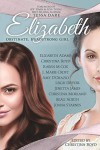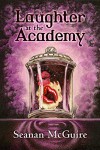

My wife had already read 'A Quiet Life In The Country' by T E Kinsey and immediately moved on to 'In The Market For Murder', the second Lady Hardcastle book, so I knew I was in for a good time with this period-piece cosy mystery.
Set in 1908, the book centres around the unique relationship between the redoubtable Lady Hardcastle, an eccentric widow with a mysterious past and Florence Armstrong, her maid and confidant, who is an expert in martial arts.
The two are seeking a quiet life in the country which, thankfully two events quickly thwart this ambition; they discover a dead body in the woods and one of the local gentry asks for their help in recovering a lost valuable.
For me, it was the perfect light read. It made me smile almost constantly and occasionally laugh out loud. As my wife had already read it, I kept finding myself turning to her and saying, 'I've just reached the part where Florence...' and we'd laugh about it because it was simply too good not to share.
Told from the point of view of Florence Armstrong, ladies maid to Lady Hardcastle it is full of nuanced wit, much of it around the rules governing the relationship between gentry and the rest of us. The relationship between Florence and Lady Armstrong is unconventional and based on several years of depending on each other as circumstances lead them to travel through various hostile environment from China, through Burma to India.
The mystery is just twisty enough to be interesting and a cast of characters that includes local gentry, the village cricket team, bigwigs in the local shipping industry and bohemian musicians playing 'American Music'. None of it is particularly challenging but it shows off the people well, It is so cosy in tone that, despite the deaths, it barely causes a ripple of emotion.
There is some playful use of creative anachronism which allows that Lady Hardcastle, drawing on her education in science at Cambridge, creates two now-taken-for-granted-but-then unknown concepts to help her investigations: the Murder Board (a large blackboard with hand-drawn portraits) and a visual timeline.
I also liked that Lady Hardcastle is the sort of woman who has written to Conan Doyle, asking him to stop Holmes from referring to his technique as 'deduction' when it is clearly 'abduction'. I had to look that one up and having done so, all I can say is that Holmes should have known better.
What made the book so enjoyable for me was the relationship between Florence Armstrong and Emily Hardcastle (aren't those names to conjure with?). I love the joy they take not only in confounding people's expectations of how women should behave but also in using those expectations to their own advantage. I'd read the book just for the banter between them. It's clever, playful and affectionate. These are strong women who care for each other and who have found a way to live together that satisfies them and holds society at bay.
Elizabeth Knowelden's narration is a perfect fit for this book. She gets all the voices perfectly. Click on the SoundCloud link below to hear a sample.

 7
7









